What’s new in 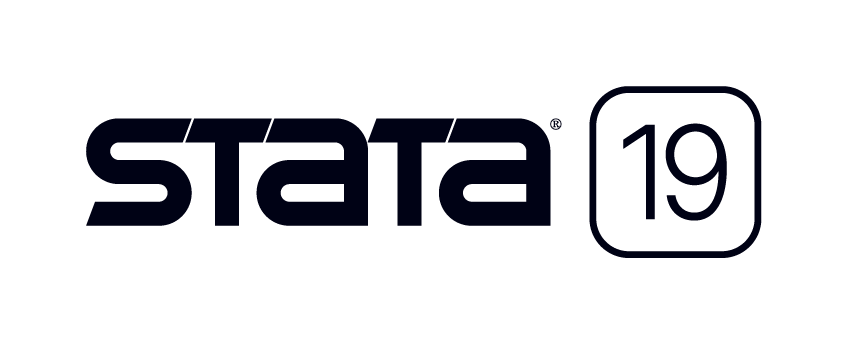
Experience the latest advancements, including many new statistical features such as machine learning via H2O, CATE, and HDFE; more powerful tables and graphs; and improvements to the interface..
Machine learning via H2O: Ensemble decision trees
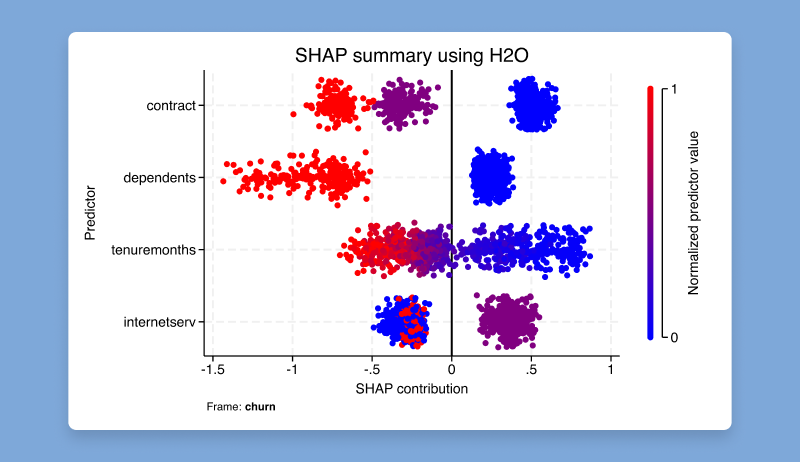
Employ machine learning to uncover insights from the data when traditional statistical models fall short. Use ensemble decision trees—gradient boosting machine (GBM) and random forest—to perform regression or classification.
Conditional average treatment effects (CATE)
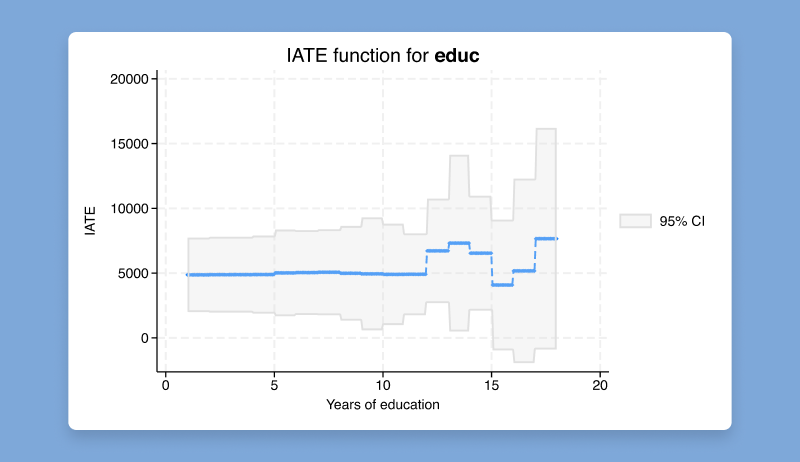
Go beyond estimating overall treatment effects in your causal analysis to estimating individualized and group-specific ones. Compare different interventions and policies. Explore treatment-effects heterogeneity.
High-dimensional fixed effects (HDFE)
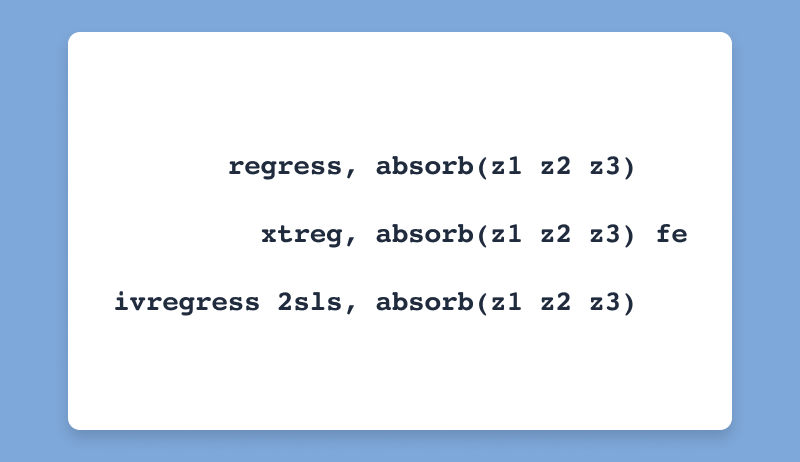
Absorb not just one but multiple high-dimensional categorical variables in your linear, fixed-effects linear, and instrumental-variables linear models, and enjoy remarkable speed gains!
Bayesian variable selection for linear model
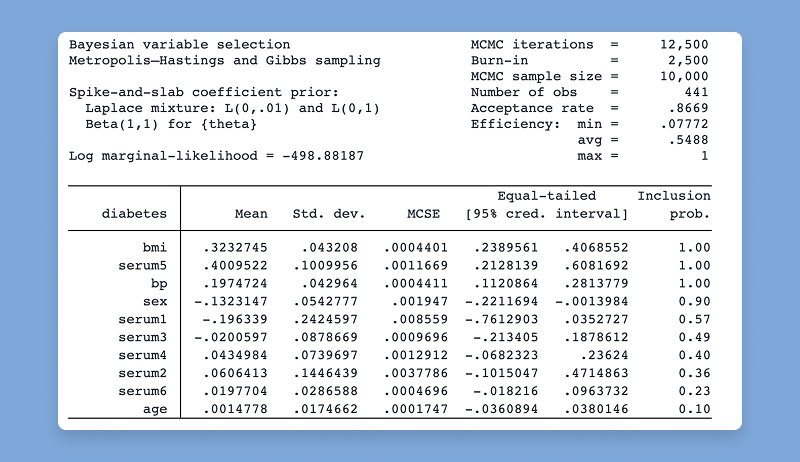
Select variables in a linear regression and account for variable-selection uncertainty with Bayesian variable selection. Choose between global–local shrinkage and spike-and-slab priors for regression coefficients, and perform Bayesian inference.
Bayesian quantile regression

Use Bayesian quantile regression to obtain full posterior distributions of quantile regression coefficients for comprehensive inference, including model-based “standard errors”.
Interval-censored multiple-event Cox model

Need to analyze event times from multiple events such as the onsets of diabetes and hypertension? Don’t know the exact event times?
Use marginal interval-censored multiple-event Cox model.
Panel-data vector autoregressive model

Fit a panel-data vector autoregressive model to analyze the trajectories of related variables when you observe multiple units or panels over time.
Correlated random-effects (CRE) model

Want coefficient estimates of time-invariant covariates in your panel-data model? Fit an RE model. Want to allow for correlation between covariates and unobserved panel-level effects? Fit an FE model. Want both? With xtreg, cre, you can now fit a CRE model.
Bayesian bootstrap
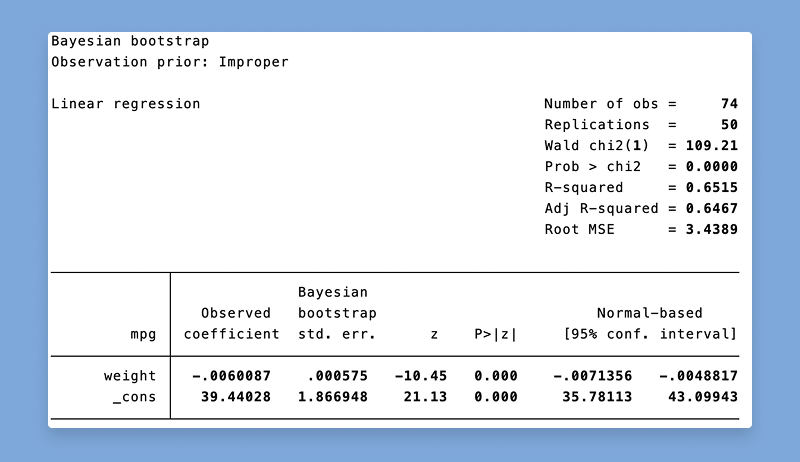
Perform Bayesian bootstrap to obtain more precise parameter estimates in small samples and incorporate prior information when sampling observations. Use it with official commands or community-contributed commands.
Control-function linear and probit models
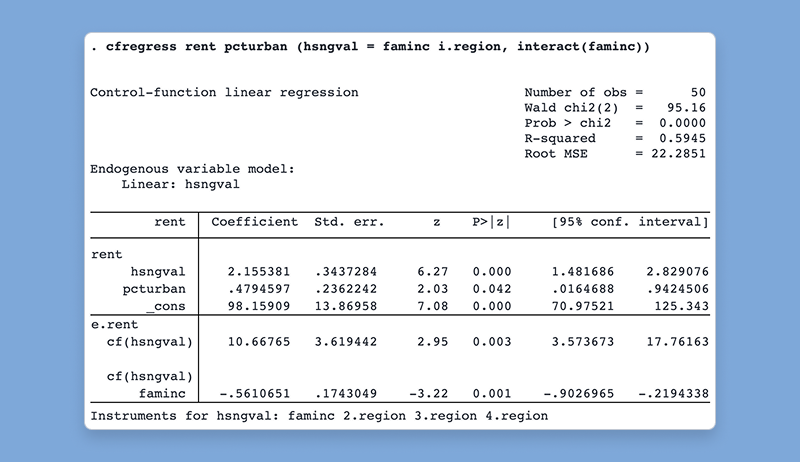
Fit control-function linear and probit models with continuous, binary, fractional, and count endogenous variables. Easily test for endogeneity.
Graphics: Bar graph CIs, heat maps, …
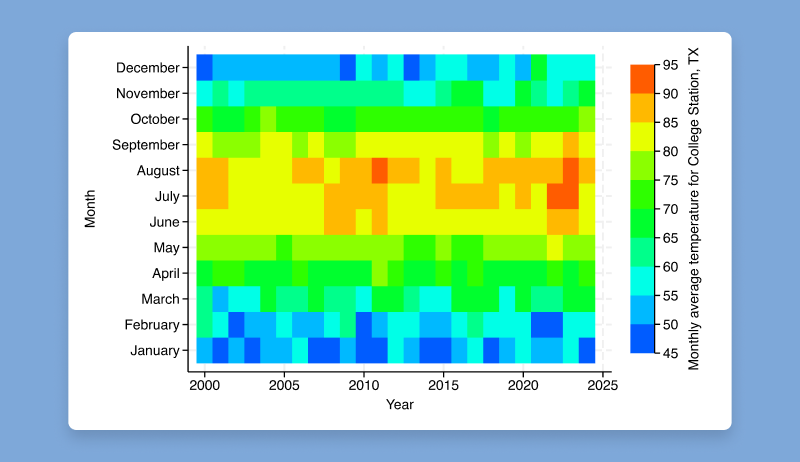
Enjoy exciting new graphical features such as heat maps, spike and capped-spike range plots, bar graphs with CIs, and more!
SVAR models via instrumental variables
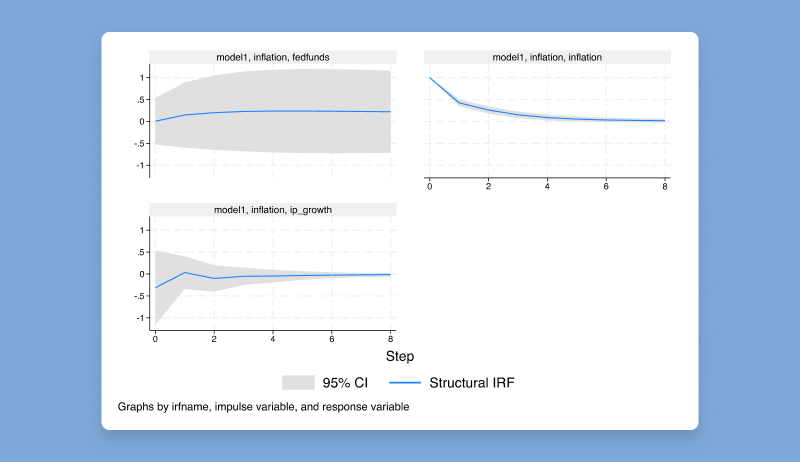
Use instruments instead of short-run constraints to estimate dynamic causal effects.
Instrumental-variables local-projection IRFs
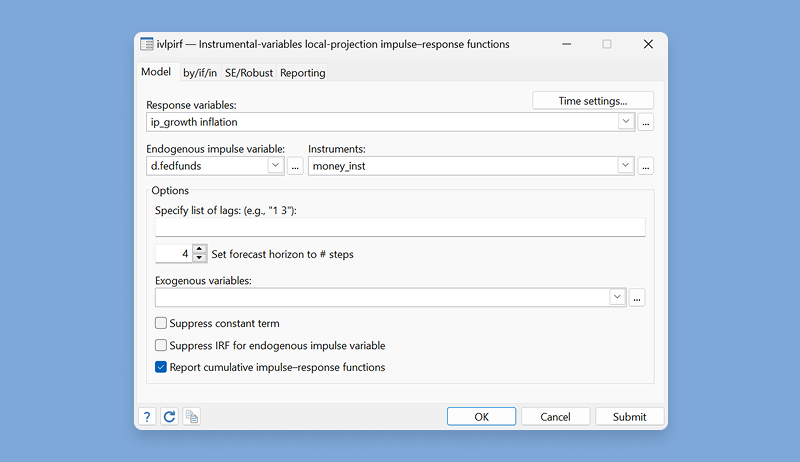
Account for endogeneity when using local projections to estimate dynamic causal effects.
Latent class model-comparison statistics
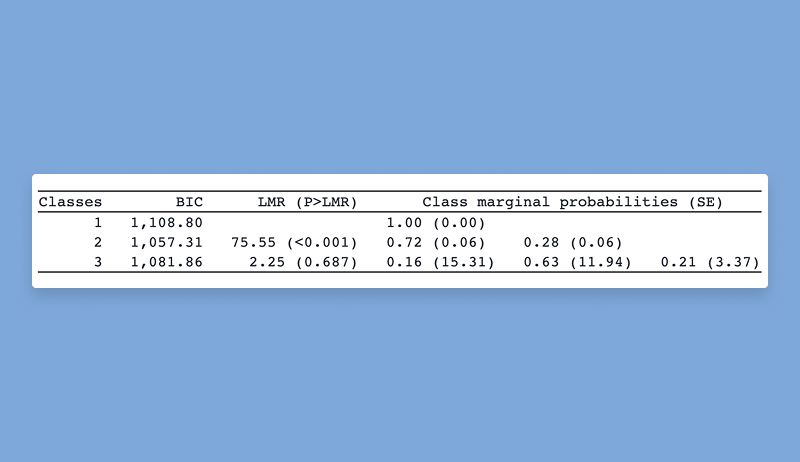
Easily compare latent class models with varying numbers of latent classes. Construct and export publication-quality tables comparing models.
Meta-analysis for correlations
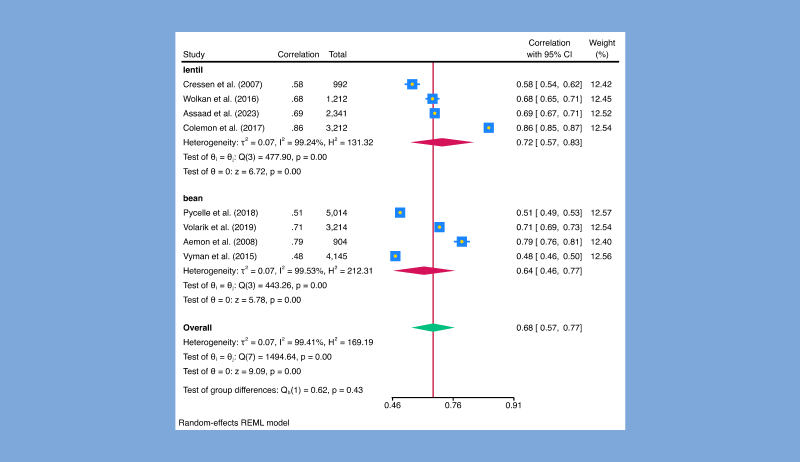
Perform meta-analysis for correlations just like you already do for two-sample means and proportions. Use all standard features such as forest plots and subgroup analysis.
Inference robust to weak instruments

Do you have weak instruments in your instrumental-variables regression? Use hypotheses tests robust to weak instruments to perform reliable inference on endogenous regressors.
Mundlak specification
test

Use Mundlak specification test to choose between random-effects and fixed-effects or correlated random-effects models, even with cluster–robust, bootstrap, or jackknife standard errors.
Bayesian asymmetric Laplace model
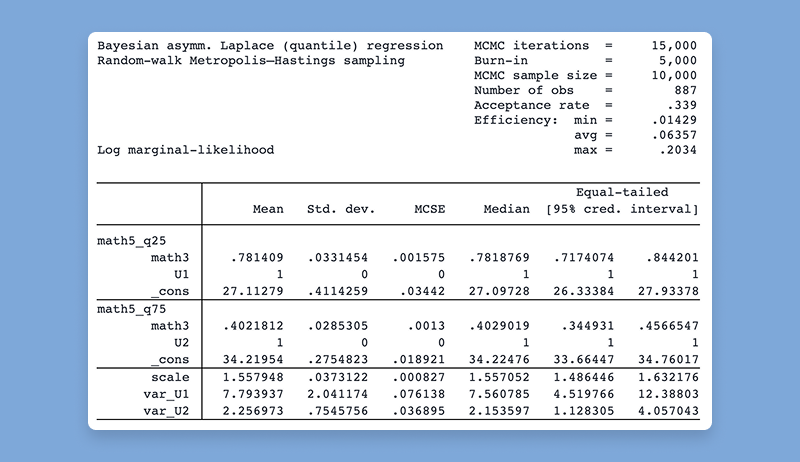
Go beyond classic quantile regression by fitting Bayesian simultaneous, multilevel, and nonlinear quantile regression models.
Do-file Editor: Templates, Autocompletion, …

Navigator panel, file templates, code folding improvements, word and selection highlighting, more autocompletion, temporary bookmarks, and much more.
Tables: Easier tabulations, exporting, …

Create a table, customize with title and notes, and export in one command. Easily collect and customize tabulations with measures of association, tabulations of survey data, and ANOVA tables.
Multiple datasets: Modify a set of frames

If you work with multiple datasets in memory or frames, you can now modify a frameset file without loading it into memory: add frames in memory to it or drop frames from it.
Stata in French
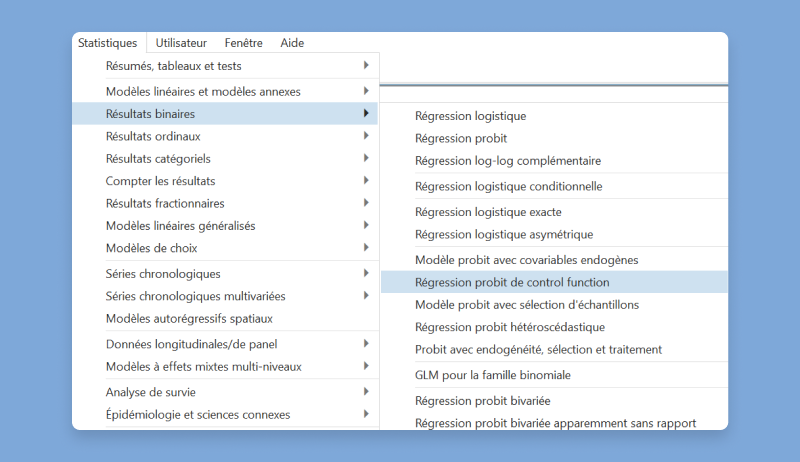
All of Stata’s interface—all menus and all dialogs—is now available in French, joining English, Chinese, Japanese, Korean, Spanish, and Swedish.
More
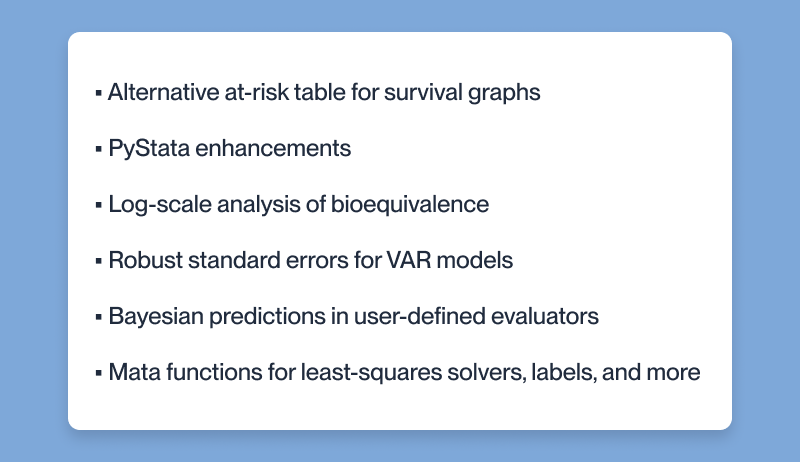
And there’s much more. See all the new features in Stata 19.
